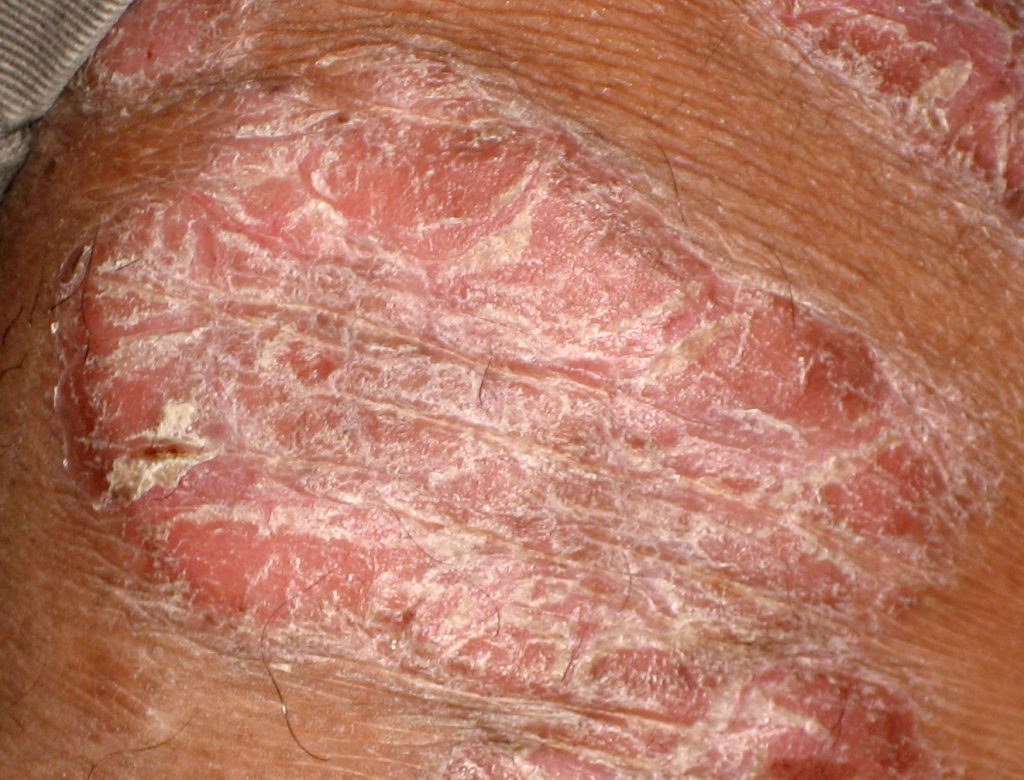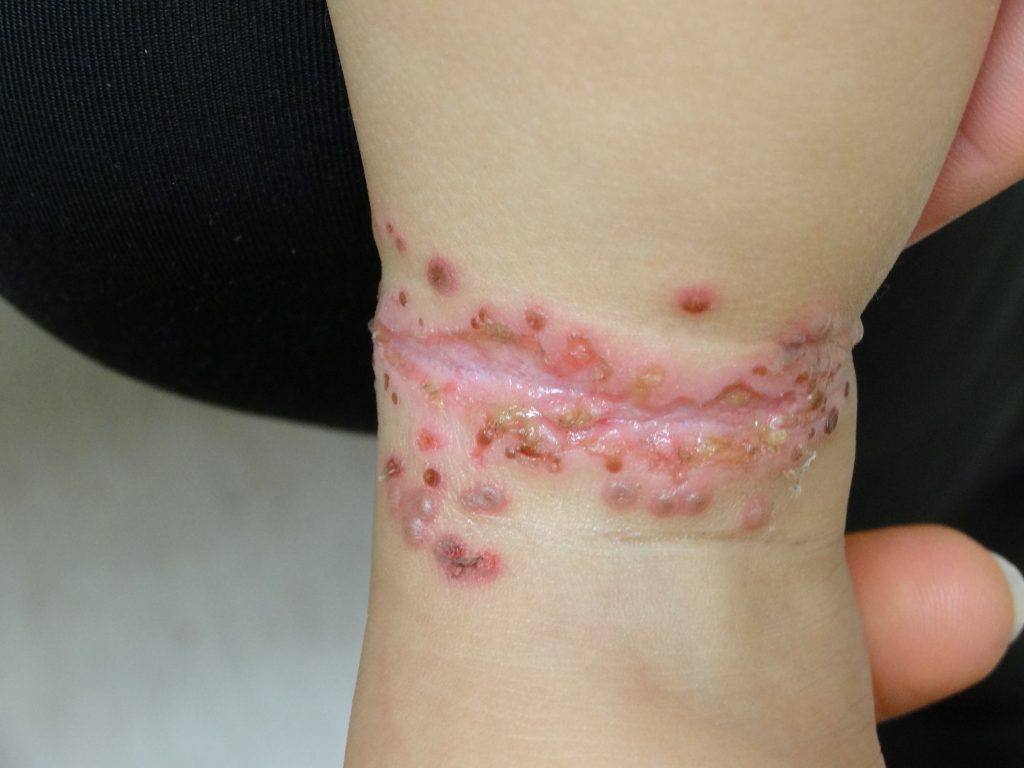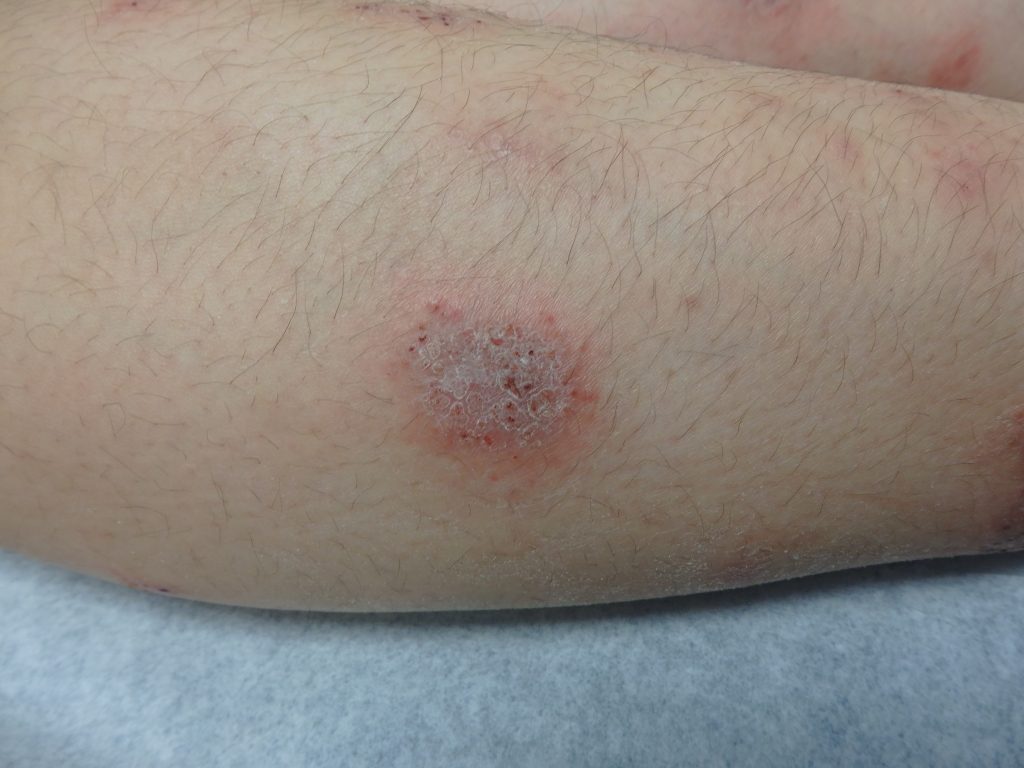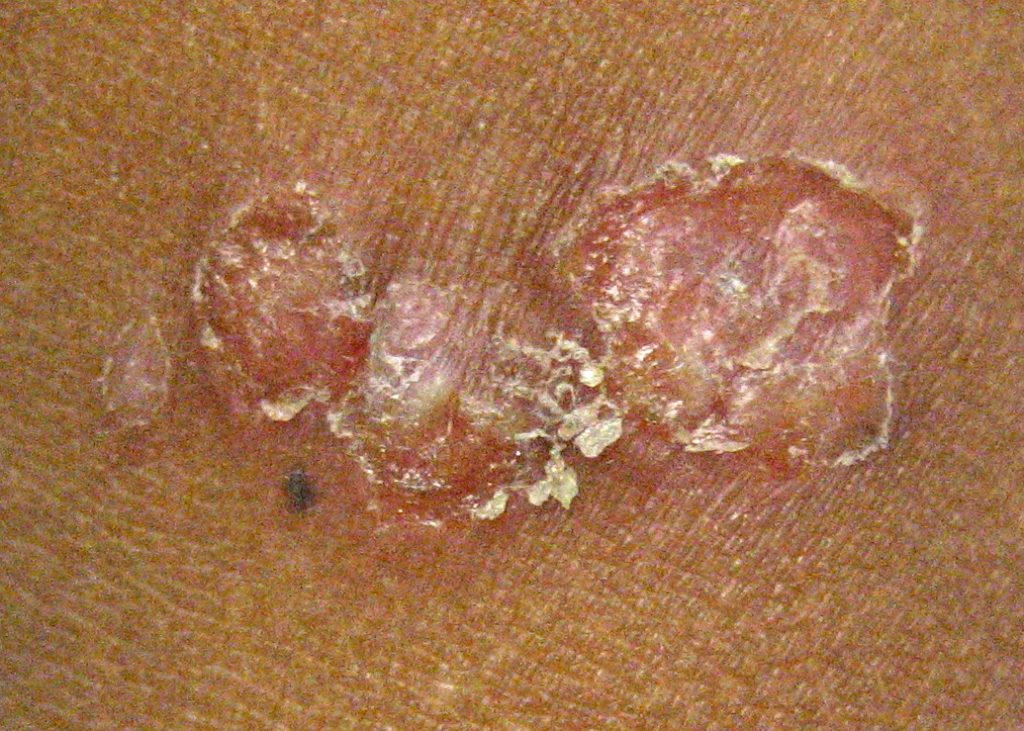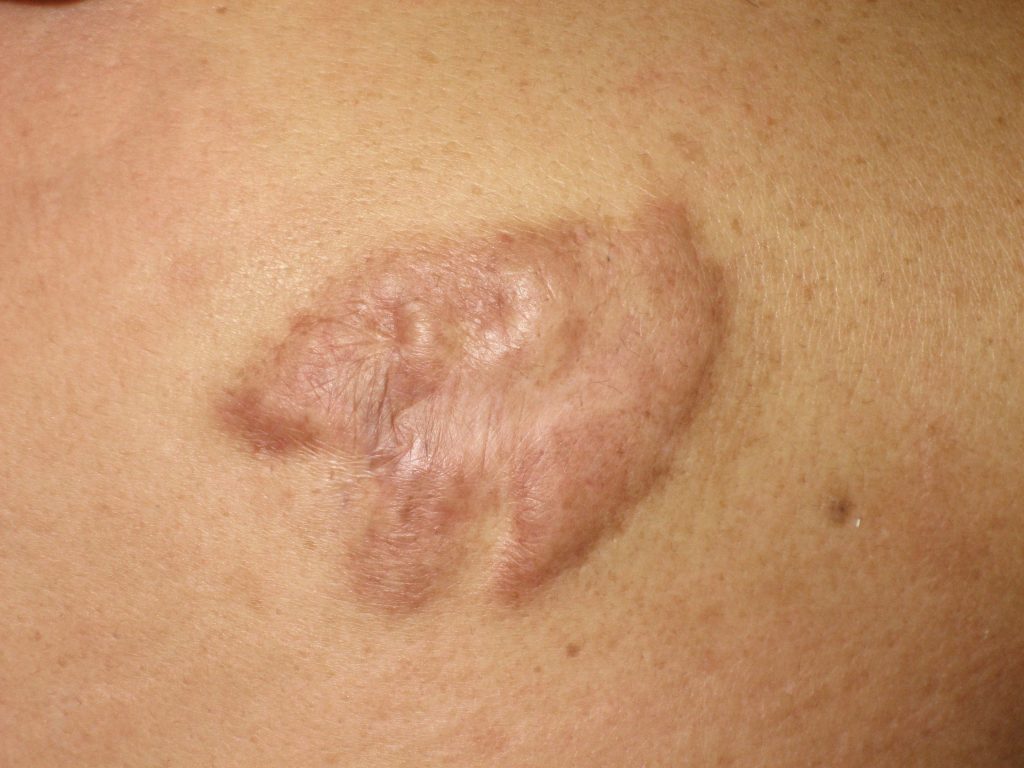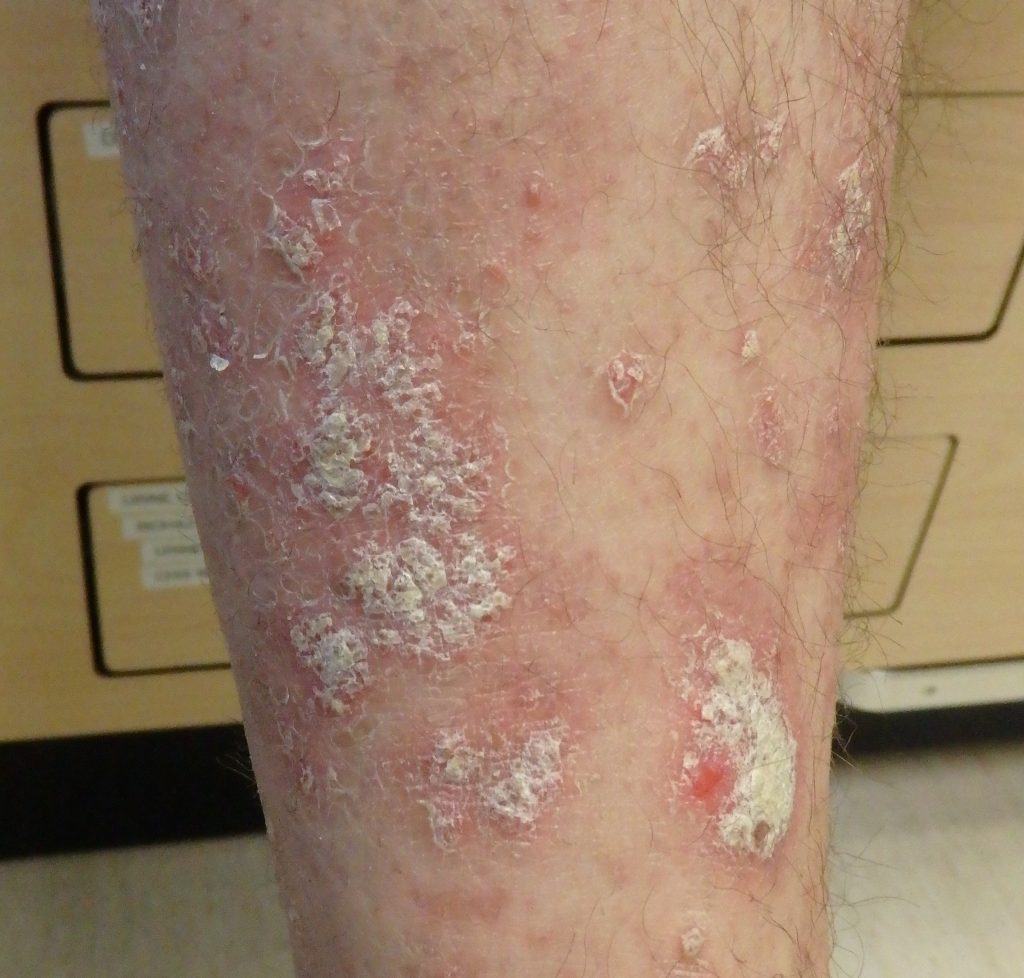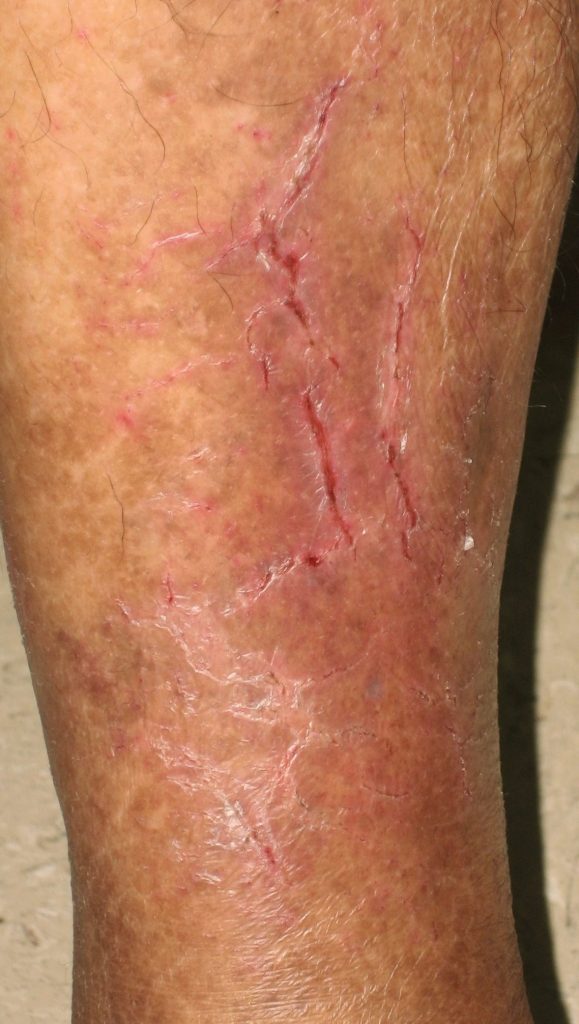Chapter 1: Introduction to Clinical Dermatology
Morphology: Secondary Lesions
Secondary Lesions
Secondary features occur when the basic form of the lesion has changed over time. This may be from a variety of factors, such as scratching or rubbing by the patient, infection or trauma.
| Crust | Dried serum, pus or blood on the surface of a lesion. |
| Scale | Visible flakes of stratum corneum — scale can be thin or thick, adherent or flaky. It may be white, silvery or yellow in colour. |
| Erosion | A slightly depressed area of loss of epidermis. Heals without scar formation. |
| Ulcer | A depressed area corresponding to loss of epidermis and dermis (and possibly the subcutis) — heals with scar formation. |
| Scar | Fibrous tissue which forms a new surface after the healing process. |
| Atrophy | Thinning of one or more layers of the skin — notable by the appearance of a thin, shiny surface, sometimes with visible blood vessels below (epidermal atrophy), or a depression (dermal atrophy). |
| Lichenification | Thickening of the epidermis with exaggeration of skin markings. |
| Fissure | A linear cleavage in the skin. It may be dry or moist. |
| Excoriation | Loss of the epidermis and superficial dermis due to scratching, may be linear or punctate. |
